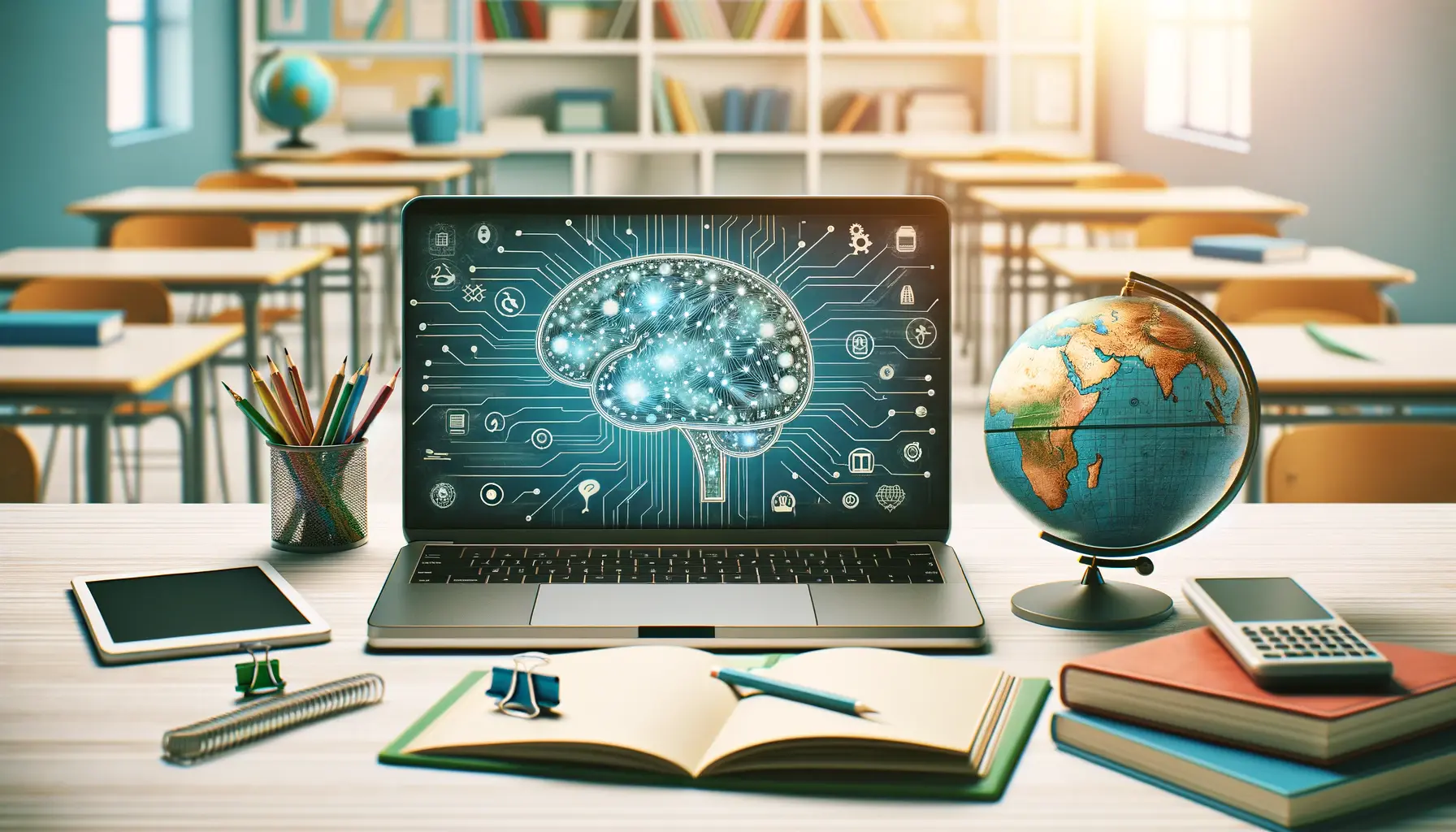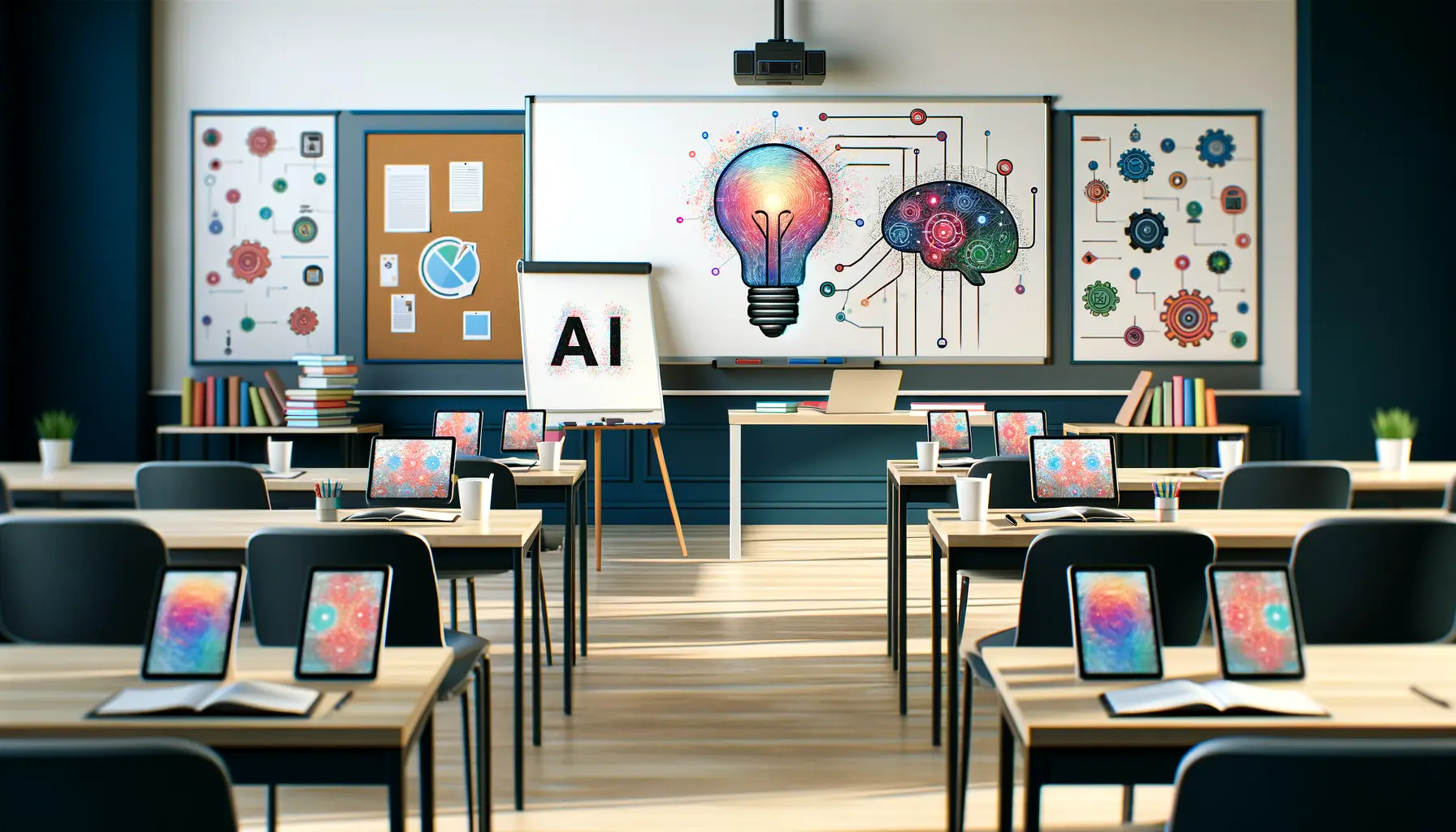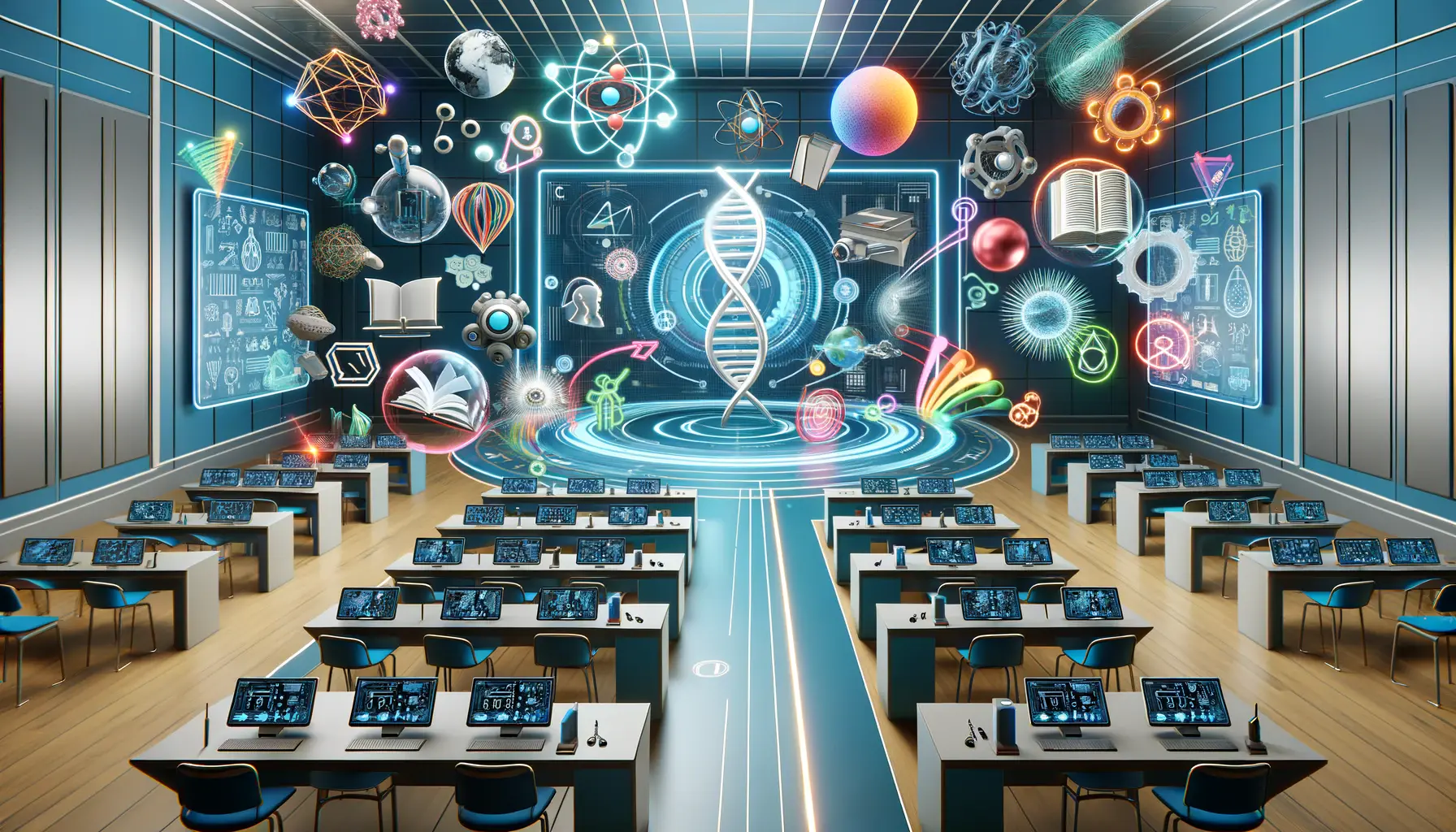The integration of artificial intelligence into the educational sector has marked a significant turning point in how teaching and learning processes are conducted.
Among the most notable advancements is the emergence of ChatGPT 4, a sophisticated AI model developed by OpenAI, which has been tailored to meet various educational needs.
This development has not only revolutionized the approach to tutoring but has also enhanced support mechanisms for students and educators alike.
ChatGPT 4’s application in education spans a wide range of functionalities, from personalized tutoring sessions to providing real-time assistance and feedback.
Its ability to understand and generate human-like text makes it an invaluable tool for educational institutions seeking to offer more targeted and efficient learning experiences.
This article delves into the transformative impact of ChatGPT 4 in the realm of education, highlighting its role in tutoring and support services.
- The Evolution of AI in Education
- Challenges and Solutions in Implementing AI Tutoring
- Impact of ChatGPT 4 on Student Engagement and Motivation
- Customizing Education with ChatGPT 4: A Path to Inclusive Learning
- Enhancing Teacher Efficiency with ChatGPT 4
- Preparing for the Future: ChatGPT 4 in Curriculum Development
- Global Perspectives: ChatGPT 4’s Role in Bridging Educational Gaps
- Empowering the Future of Education with ChatGPT 4
- ChatGPT 4 in Education: Frequently Asked Questions
The Evolution of AI in Education
From Basic Tools to Advanced AI Tutors
The journey of artificial intelligence in education has transitioned from simple, rule-based algorithms to the advanced, learning-capable AI systems we see today.
Initially, educational tools powered by AI were limited to basic functions such as grading multiple-choice questions and providing generic feedback.
However, the advent of machine learning and natural language processing technologies has paved the way for more sophisticated applications like ChatGPT 4.
These advancements have enabled AI to not only understand complex human queries but also generate personalized responses that cater to the individual learning needs of students.
ChatGPT 4, in particular, represents a significant leap forward in this evolution.
With its enhanced understanding of context and ability to process vast amounts of information, it acts as a virtual tutor that can adapt to various learning styles and preferences.
This adaptability ensures that students receive tutoring that is closely aligned with their specific educational requirements, thereby maximizing learning outcomes.
Personalized Learning Experiences
One of the key strengths of ChatGPT 4 in education is its capacity to offer personalized learning experiences.
Unlike traditional one-size-fits-all teaching methods, AI-driven tutoring systems can analyze a student’s performance, identify areas of improvement, and tailor the learning content accordingly.
This approach not only makes learning more effective but also keeps students engaged by addressing their unique challenges and interests.
Furthermore, ChatGPT 4 can provide instant feedback on assignments and practice exercises, a feature that is particularly beneficial in subjects requiring problem-solving skills.
This immediate response mechanism helps students correct their mistakes in real-time, fostering a more dynamic and interactive learning environment.
The integration of ChatGPT 4 into educational systems marks a new era of personalized and interactive learning, setting the stage for more innovative applications of AI in education.
Challenges and Solutions in Implementing AI Tutoring
The integration of ChatGPT 4 into educational frameworks is not without its challenges.
While the benefits are manifold, educators and institutions face several hurdles in adopting this advanced AI technology.
These challenges range from technical and infrastructural issues to concerns about the quality of AI-generated content and its impact on traditional teaching methods.
However, for every challenge, there are viable solutions that can help overcome these obstacles and harness the full potential of AI in education.
Technical and Infrastructural Requirements
Implementing AI-driven tutoring systems like ChatGPT 4 requires a robust technical infrastructure, including reliable internet connectivity and access to compatible devices for both students and teachers.
In regions where such infrastructure is lacking, this poses a significant barrier to the adoption of AI in education.
- Solution: Governments and educational institutions can invest in upgrading their IT infrastructure, ensuring that schools are equipped with the necessary technology. Additionally, partnerships with tech companies can provide access to resources and expertise needed to implement AI solutions effectively.
Ensuring the Quality of AI-Generated Content
Another concern is the accuracy and reliability of the content generated by AI tutors.
Given that AI models learn from vast datasets, there’s a risk of perpetuating inaccuracies or biases present in the training data.
- Solution: Continuous monitoring and updating of AI models are essential to ensure the quality of content. Educators can play a crucial role in reviewing AI-generated materials and providing feedback to improve accuracy and relevance.
Integration with Existing Curricula
Finding ways to integrate AI tutoring systems into existing educational curricula can be challenging.
Educators may need to redesign lesson plans to incorporate AI-driven learning experiences effectively.
- Solution: Professional development programs for teachers can provide them with the skills and knowledge to integrate AI tools into their teaching practices. Collaborative efforts between curriculum developers and AI experts can also lead to the creation of integrated learning modules.
Addressing Ethical and Privacy Concerns
The use of AI in education raises ethical questions, particularly regarding student data privacy and the potential for AI to influence educational outcomes.
- Solution: Implementing strict data protection policies and ensuring transparency in how AI models use and store student information can mitigate privacy concerns. Ethical guidelines for AI use in education can help safeguard against potential negative impacts on learning.
The successful implementation of AI tutoring systems like ChatGPT 4 in education requires a multifaceted approach, addressing technical, ethical, and pedagogical challenges to unlock the transformative potential of AI in learning.
Impact of ChatGPT 4 on Student Engagement and Motivation
The advent of ChatGPT 4 in the educational landscape has introduced a novel approach to engaging and motivating students.
This AI-driven technology has the potential to transform traditional learning environments into interactive, dynamic spaces where students are more involved in their learning processes.
The personalized nature of AI tutoring not only caters to individual learning styles but also encourages active participation, thereby enhancing student engagement and motivation.
At the core of ChatGPT 4’s impact on student engagement is its ability to provide instant, personalized feedback and support.
This immediacy helps maintain students’ focus and interest in the subject matter, as they can immediately see the results of their efforts and understand where they need to improve.
Moreover, the interactive nature of ChatGPT 4, with its conversational interface, makes learning more relatable and accessible, breaking down barriers that might exist in traditional teacher-student dynamics.
Enhancing Interactive Learning
- ChatGPT 4 facilitates a more interactive learning experience by allowing students to ask questions and receive detailed explanations in real-time, fostering a deeper understanding of the subject matter.
- It supports various learning modalities, including text, interactive quizzes, and problem-solving exercises, catering to different learning preferences and enhancing engagement.
Personalization of Learning Content
- By analyzing individual student performance, ChatGPT 4 can tailor learning content to address specific weaknesses and strengths, making learning more efficient and effective.
- This personalization ensures that students remain challenged but not overwhelmed, striking a balance that keeps motivation levels high.
Boosting Confidence and Autonomy
- ChatGPT 4 empowers students by providing them with the tools to explore topics independently, fostering a sense of autonomy in their learning journey.
- The non-judgmental, supportive nature of AI tutoring can boost students’ confidence, encouraging them to tackle challenging subjects without fear of failure.
The integration of ChatGPT 4 into educational settings promises not only to enhance student engagement and motivation but also to cultivate a learning environment where students feel supported, confident, and autonomous in their educational pursuits.
Customizing Education with ChatGPT 4: A Path to Inclusive Learning
The deployment of ChatGPT 4 in educational contexts heralds a new era of customized education, paving the way for more inclusive learning environments.
By leveraging the capabilities of this advanced AI, educators can now address the diverse needs of students, creating a more equitable educational landscape.
This shift towards customization is instrumental in ensuring that all learners, regardless of their backgrounds or abilities, have access to education that resonates with their unique learning styles and preferences.
ChatGPT 4’s role in fostering inclusive learning is multifaceted.
It not only adapts to individual learning paces but also provides support in various languages, breaks down complex concepts into digestible explanations, and offers alternative learning resources.
This level of customization ensures that education is accessible to students with different learning needs, including those with disabilities, non-native speakers, and students facing socio-economic challenges.
Support for Diverse Learning Needs
- ChatGPT 4 can generate content that caters to a wide range of learning disabilities, offering simplified text, visual aids, and interactive elements to enhance comprehension.
- It supports multilingual education, breaking down language barriers and providing learners with content in their native languages, thus promoting linguistic diversity in learning.
Adapting to Individual Learning Paces
- With ChatGPT 4, education can be tailored to match the pace of each student, allowing for acceleration or additional support where needed. This personalized approach helps prevent students from falling behind or feeling disengaged due to a mismatch in pacing.
- The AI’s ability to track progress and adjust the difficulty level of tasks ensures that students are constantly challenged, promoting continuous growth and learning.
Creating Accessible Learning Materials
- ChatGPT 4 aids in the creation of accessible learning materials, including those compliant with the Web Content Accessibility Guidelines (WCAG), making digital education resources available to students with visual, auditory, or physical disabilities.
- It can also translate existing educational content into various formats, such as Braille or audio, further enhancing accessibility for students with specific needs.
The customization capabilities of ChatGPT 4 are key to building inclusive educational environments where every student has the opportunity to succeed. By addressing the varied needs and preferences of learners, ChatGPT 4 is setting the stage for a more equitable and accessible educational future.
Enhancing Teacher Efficiency with ChatGPT 4
The introduction of ChatGPT 4 into the educational sphere has not only transformed the learning experience for students but also significantly enhanced teacher efficiency.
This AI-driven tool offers a plethora of functionalities designed to assist educators in managing their workload, personalizing student learning experiences, and improving instructional quality.
By automating routine tasks and providing insightful data analysis, ChatGPT 4 enables teachers to allocate more time to critical teaching activities and student interaction.
From creating lesson plans and grading assignments to offering real-time student support, ChatGPT 4 acts as an invaluable assistant to educators.
Its ability to process and analyze large volumes of data also aids in identifying learning patterns, student performance trends, and areas where students may require additional support.
This level of analysis is instrumental in informing teaching strategies and ensuring that instruction is both effective and targeted.
Automating Administrative Tasks
- ChatGPT 4 can automate various administrative tasks such as attendance tracking, grading quizzes, and organizing student records, thereby reducing the time teachers spend on paperwork.
- It streamlines communication with students and parents by generating reports, announcements, and personalized feedback, enhancing the home-school connection.
Personalizing Student Learning
- By analyzing individual student data, ChatGPT 4 assists teachers in creating personalized learning plans that cater to the unique needs and learning styles of each student.
- This AI tool can suggest differentiated instructional strategies and resources, enabling teachers to address diverse learning needs within their classrooms effectively.
Supporting Real-Time Student Engagement
- ChatGPT 4 provides teachers with the tools to engage students in real-time, whether through interactive discussions, instant feedback on assignments, or by facilitating group projects.
- It also offers insights into student engagement levels and participation, allowing teachers to adjust their instructional methods to maximize student involvement and interest.
By leveraging ChatGPT 4, teachers can enhance their instructional practices, engage students more effectively, and manage their time more efficiently, ultimately leading to improved educational outcomes.
Preparing for the Future: ChatGPT 4 in Curriculum Development
The integration of ChatGPT 4 into curriculum development represents a forward-thinking approach to education, preparing students for the future by incorporating advanced AI and machine learning concepts into their learning journey.
This integration not only enriches the curriculum with cutting-edge content but also equips students with the skills and knowledge necessary to thrive in a rapidly evolving digital world.
By embedding ChatGPT 4 into curriculum planning and execution, educators can create dynamic, interactive, and relevant learning experiences that resonate with the interests and needs of today’s learners.
ChatGPT 4’s capabilities extend beyond mere content delivery; it can simulate real-world scenarios, facilitate problem-based learning, and encourage critical thinking and innovation.
This AI tool can be used to design curricula that are not only informative but also engaging and interactive, fostering a deeper understanding of complex subjects and promoting a culture of continuous learning and curiosity.
Integrating AI and Machine Learning Concepts
- Curricula enhanced with ChatGPT 4 can include modules on AI and machine learning, providing students with foundational knowledge and practical skills in these critical areas.
- Through project-based learning activities designed by ChatGPT 4, students can engage in hands-on projects that apply AI concepts to solve real-world problems, fostering both technical skills and creative thinking.
Facilitating Interactive and Engaging Learning
- ChatGPT 4 can create interactive simulations and virtual labs where students can experiment with AI algorithms, data analysis, and model building in a controlled, virtual environment.
- It supports the creation of gamified learning experiences, making complex subjects more accessible and enjoyable for students, thereby increasing engagement and retention of knowledge.
Adapting to Emerging Educational Needs
- As the demand for AI literacy and digital skills grows, ChatGPT 4 helps educators quickly adapt curricula to include current trends, technologies, and methodologies in AI education.
- This adaptability ensures that students are not only prepared for the jobs of the future but are also capable of contributing to innovation and technological advancement.
The role of ChatGPT 4 in curriculum development is pivotal in shaping an education system that is responsive to the demands of the digital age. By preparing students with the skills and knowledge to navigate the future, ChatGPT 4 is setting the foundation for a new era of informed, innovative, and adaptable learners.
Global Perspectives: ChatGPT 4’s Role in Bridging Educational Gaps
The global education landscape is marked by disparities in access to quality education, with students in various parts of the world facing challenges that range from resource limitations to inadequate instructional support.
ChatGPT 4 emerges as a transformative tool in this context, offering potential solutions to bridge these educational gaps.
By providing access to personalized tutoring and support, ChatGPT 4 can play a crucial role in leveling the playing field, ensuring that students from diverse backgrounds have the opportunity to achieve their full potential.
ChatGPT 4’s ability to deliver customized learning experiences regardless of geographical location or socio-economic status makes it an invaluable asset in global education efforts.
Its scalability and flexibility allow for its deployment in a variety of educational settings, from remote rural schools to urban educational centers, making high-quality education more accessible and inclusive.
Expanding Access to Education
- ChatGPT 4 can provide students in under-resourced areas with access to quality tutoring and educational materials, overcoming barriers related to physical resources and teacher shortages.
- It facilitates distance learning and virtual classrooms, enabling students to continue their education even in the face of disruptions such as natural disasters or global pandemics.
Supporting Multilingual Education
- With its advanced language processing capabilities, ChatGPT 4 supports multilingual education, offering learning resources in multiple languages and thus promoting linguistic diversity and inclusion.
- This feature is particularly beneficial in regions with linguistic minorities, ensuring that language does not become a barrier to accessing quality education.
Enhancing Teacher Training and Professional Development
- ChatGPT 4 can also contribute to teacher training programs, providing educators with access to the latest pedagogical strategies and content knowledge, thereby improving teaching quality across diverse educational contexts.
- It supports ongoing professional development by offering personalized learning paths for teachers, enabling them to stay abreast of advancements in their field and incorporate innovative teaching methods into their practice.
ChatGPT 4’s role in global education is not just about enhancing learning outcomes; it’s about democratizing access to education, empowering teachers, and fostering a more equitable and inclusive educational ecosystem worldwide.
Empowering the Future of Education with ChatGPT 4
The journey through the transformative landscape of education with ChatGPT 4 reveals a promising horizon where personalized learning, enhanced teacher efficiency, and global educational equity become attainable realities.
As we’ve explored, ChatGPT 4’s integration into various facets of education—from tutoring and support to curriculum development and bridging educational gaps—showcases its potential to revolutionize how education is delivered and experienced worldwide.
Revolutionizing Personalized Learning
At the heart of ChatGPT 4’s impact is its ability to tailor educational experiences to meet the unique needs of each learner.
This personalization extends beyond adaptive learning paths and encompasses support for diverse learning needs, ensuring that education is inclusive and accessible to all students.
The implications of this for student engagement, motivation, and achievement are profound, marking a shift towards a more learner-centered approach in education.
Enhancing Teacher Roles
ChatGPT 4 also emerges as a pivotal tool for educators, augmenting their capabilities and enabling them to focus on what they do best—teach.
By automating administrative tasks, providing real-time insights into student performance, and supporting curriculum development, ChatGPT 4 allows teachers to dedicate more time to engaging with students and refining pedagogical strategies.
This not only improves instructional quality but also elevates the teaching profession by leveraging technology to enhance human capabilities.
Global Impact and Educational Equity
- ChatGPT 4’s scalability and flexibility offer solutions to longstanding challenges of educational access and quality, particularly in under-resourced areas. By democratizing access to quality education, ChatGPT 4 plays a crucial role in leveling the educational playing field globally.
- Its support for multilingual education and teacher professional development further underscores its potential to foster a more inclusive and equitable educational ecosystem, where barriers to education are systematically dismantled.
In conclusion, the advent of ChatGPT 4 in education represents a significant leap forward in our quest to provide high-quality, personalized, and inclusive education for all.
As we continue to navigate the possibilities and challenges of integrating AI into educational practices, it is clear that ChatGPT 4 stands as a beacon of innovation, offering a glimpse into a future where technology and education converge to empower learners and educators alike.
The journey with ChatGPT 4 is just beginning, and its full potential to transform education is yet to be realized.
However, one thing is certain: the future of education with ChatGPT 4 is bright, promising a world where learning knows no boundaries.
ChatGPT 4 in Education: Frequently Asked Questions
Explore common inquiries about the revolutionary role of ChatGPT 4 in the educational sector, providing insights into its application, benefits, and potential challenges.
ChatGPT 4 serves as an AI-driven tutor, offering personalized learning experiences, instant feedback, and support across various subjects to enhance student learning and teacher efficiency.
By analyzing individual student interactions and performance, ChatGPT 4 tailors educational content and feedback, addressing specific learning needs and styles for a customized experience.
Yes, its interactive and conversational capabilities make learning more engaging and accessible, encouraging active participation and sustained interest in the subject matter.
Absolutely. ChatGPT 4 assists teachers by automating administrative tasks, providing insights into student performance, and supporting curriculum development, enhancing overall teaching efficiency.
It offers scalable and flexible learning solutions, making quality education accessible to students regardless of geographical location or socio-economic status, thus bridging educational gaps.
Yes, with its advanced language processing capabilities, ChatGPT 4 supports learning in multiple languages, promoting linguistic diversity and inclusivity in education.
Challenges include ensuring the accuracy of AI-generated content, integrating AI tools into existing curricula, and addressing ethical and privacy concerns related to AI use.
Educators can effectively implement ChatGPT 4 by incorporating it into blended learning models, using it to supplement traditional teaching methods, and continuously evaluating its impact on learning outcomes.












